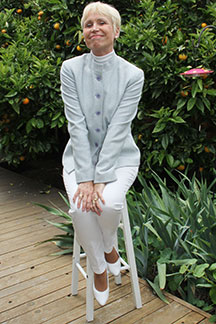Originally headquartered in the Kammergericht building in Berlin http://www.walled-in-berlin.com/j-elke-ertle/berlins-kammergericht-appellate-court/, the Allied Control Council (Allierter Kontrolrat) was in operation for only three years – 1945 to 1948. The following year, it morphed into the Allied High Commission (Allierte Hohe Kommission), which met at the Hotel Petersberg, near Bonn, Germany. The Allied Control Council was disbanded when the final peace treaty of 1990 restored full sovereignty to the reunified Germany.

Location of the Allied Control Council between 1945 and 1948. Today, Berlin’s Kammergericht is again housed in the building, photo © J. Elke Ertle, 2015
Creation of the Allied Control Council
Preparations for the postwar occupation and administration of German affairs following the surrender of the Third Reich began during the second half of 1944. The European Advisory Commission – formed in 1943 – did most of the planning. It recommended shared-power administration. Therefore, following Adolf Hitler’s death in 1945 and Germany’s unconditional surrender, the Allies signed a four-power document that created the Allied Control Council. The Allied Control Council’s initial members were Marshal Georgy Zhukov (Soviet Union), General Dwight D. Eisenhower (United States), Field Marshal Bernard Montgomery (Great Britain) and General Jean de Lattre de Tassigny (France).
Potsdam Conference of 1945
The European Advisory Commission was dissolved at the Potsdam Conference. Germany was officially divided into four military occupation zones: American, British, French and Soviet. It was agreed that each occupying power would govern its zone. It was also agreed that all four Allies would jointly rule on all matters affecting Germany as a whole. A representative from each of the four powers would sit on the Allied Control Council.

Allied Occupation Zones of Germany (British, French, American and Soviet) – 1945 to 1990
Purpose of the Allied Control Council
During its three-year existence the Allied Control Council issued a substantial number of proclamations, laws, orders, directives and instructions. These dealt in large part with the abolition of Nazi laws and organizations, demilitarization and denazification.
Breakdown of the Allied Control Council
As time passed, the quadripartite meetings got more and more cantankerous. Relations between the Western Allies and the Soviet Union deteriorated, as did their cooperation in the administration of occupied Germany. On 20 March 1948, the Soviet representative on the Allied Control Council, Vasily Sokolovsky, walked out of the meeting and never returned. Since the Council was required to reach unanimous agreement on all decisions that pertained to the whole of Germany, Sokolovsky’s action effectively shut down the Council. Soon thereafter, the Soviet blockaded West Berlin. The three Western Allies countered with the Berlin Airlift. A Cold War between East and West ensued that continued until the fall of the Berlin Wall.
Post-Allied Control Council Operations
Although the Allied Control Council effectively ceased all activity in 1948, it was not formally dissolved. The only four-power operations to continue were the management of the Berlin-Spandau Prison and that of the Berlin Air Safety Center. Germany remained under nominal military occupation until 15 March 1991, when the final ratification of the Treaty on the Final Settlement With Respect to Germany, also known as the Two Plus Four Treaty (Vertrag ueber die abschliessende Regelung in Bezug auf Deutschland or Zwei-Plus-Vier-Vertrag) was signed in 1990. http://www.walled-in-berlin.com/j-elke-ertle/two-plus-four-treaty As part of the treaty, the Allied Control Council was officially disbanded.
For a sneak peek at the first 20+ pages of my memoir, Walled-In: A West Berlin Girl’s Journey to Freedom, click “Download a free excerpt” on my home page and feel free to follow my blog about anything German: historic or current events, people, places or food.
Walled-In is my story of growing up in Berlin during the Cold War. Juxtaposing the events that engulfed Berlin during the Berlin Blockade, the Berlin Airlift, the Berlin Wall and Kennedy’s Berlin visit with the struggle against my equally insurmountable parental walls, Walled-In is about freedom vs. conformity, conflict vs. harmony, domination vs. submission, loyalty vs. betrayal.



















